Whether you smother it on apple slices or spread it on toast, peanut butter is the perfect go-to snack to satisfy hunger. But is all that hearty, creamy (or crunchy) goodness actually healthy?
It all depends on which type (and how much) you’re eating.
There are plenty of health benefits to eating peanut butter, but not all store-bought versions are created equal. If you’re wondering if peanut butter is dangerous or healthy for you, start here!
We’ll look more into the benefits of peanut butter, some frequently asked questions, and the healthiest type of peanut butter to snag at the grocery store.
Benefits of Eating Peanut Butter
Photo Credit: Shutterstock
When consumed in moderation as part of a balanced diet, peanut butter can offer several health benefits.
Here are some of the best ones:
- It’s nutrient-rich. Peanut butter is a good source of essential nutrients, including protein, healthy fats, fiber, vitamins (such as vitamin E and B vitamins), and minerals (such as magnesium, potassium, and phosphorus).
- It’s a great source of protein. Most notably, peanut butter is a valuable source of plant-based protein. (A good choice for vegetarians and vegans.)
- It contains heart-healthy fats. Peanut butter contains monounsaturated and polyunsaturated fats, which are associated with improved heart health when consumed in moderation.
- It can help with weight management. The combination of protein and healthy fats in peanut butter can help you feel full and satisfied, potentially reducing your overall calorie intake.
- It’s rich in fiber. Peanut butter is a source of dietary fiber, which can support digestive health and promote a feeling of fullness.
- It’s a source of antioxidants. Peanuts contain antioxidants, such as resveratrol and vitamin E, which can help protect cells from oxidative damage.
- It can lower your risk of heart disease. Some studies suggest that regular consumption of nuts, including peanuts, may be associated with a reduced risk of heart disease.
- It can help control diabetes. The healthy fats and fiber in peanut butter can help stabilize blood sugar levels and improve insulin sensitivity.
- It aids in muscle building and repair. The protein content in peanut butter can support muscle growth and repair, making it a good choice for athletes and those engaged in physical activity.
Is Peanut Butter Bad for Cholesterol?
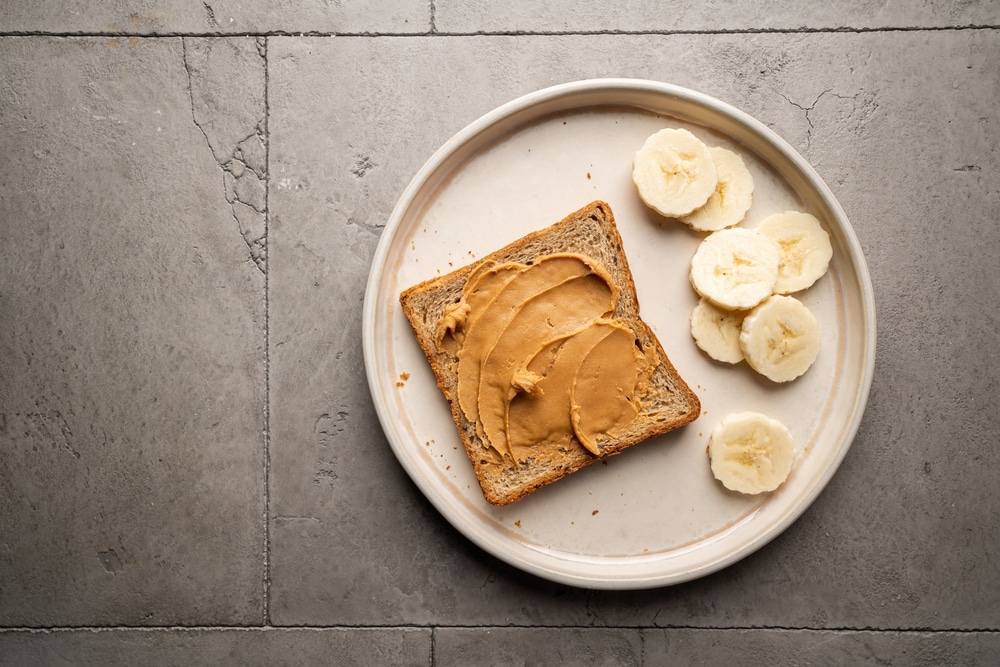
Photo Credit: Shutterstock
When speaking with TODAY, registered dietitian nutritionist Frances Largeman-Roth explains that since peanut butter is a plant-based food, it does not contain any cholesterol. It is also free of any trans fat.
That said, many people worry about the saturated fat found in peanut butter. Saturated fats may raise your levels of LDL cholesterol (or “bad” cholesterol), which can increase your risk of cardiovascular disease. The American Heart Association recommends getting just 5% to 6% of your calories from saturated fat per day, or around 13 grams.
The good news? There is only a small amount of saturated fat in one serving of peanut butter — about 3 grams. (So it’s important to stick to the appropriate serving size.)
How Much Is Too Much?
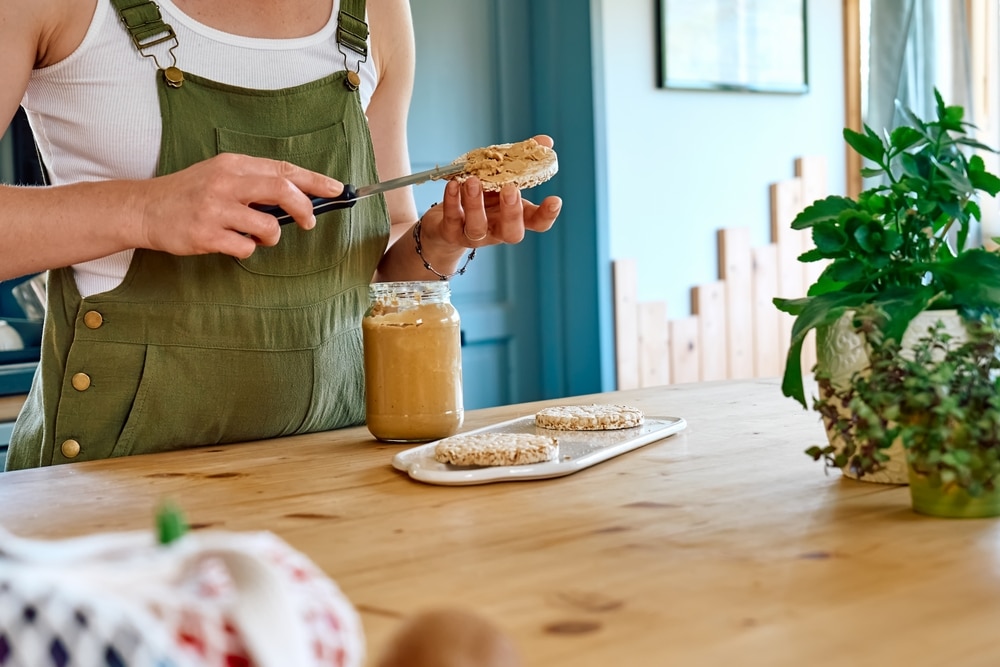
Photo Credit: Shutterstock
The recommended serving size of peanut butter is two tablespoons, which should give you plenty to spread on a sandwich or use as a snack.
According to the U.S. Department of Agriculture, one serving (two tablespoons) of the standard, store-bought creamy peanut butter contains:
- 191 calories
- 7g of protein
- 16g of fat
- 7g carbohydrates
- 1.6g fiber
- 3g sugar
While you can eat peanut butter every day if you choose, it’s best to stick to (or around) the recommended serving size.
The key here is moderation.
While peanut butter does offer some great health benefits, many of us are eating way too much of it! If you’re consuming half a jar in one sitting (multiple days a week), you have excess amounts of sugar, calories, salt, and saturated fat to worry about, especially if you’re choosing an option that contains a bunch of additives.
Sticking to around two tablespoons of peanut butter per day is the best way to enjoy its health benefits.
What is the Healthiest Peanut Butter to Buy?
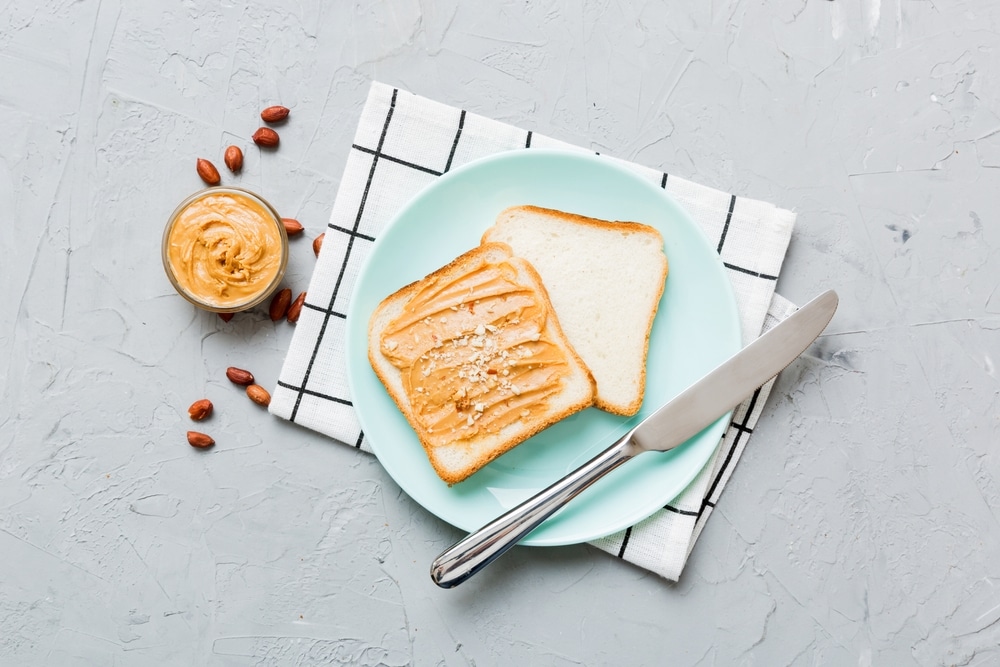
Photo Credit: Shutterstock
Here’s where the nutritional benefits come into play! It all comes down to which peanut butter you choose from the grocery store.
The problem with so many peanut butters is they contain some not-so-great added ingredients, such as sugar or high fructose corn syrup. While peanuts remain the core ingredient, all of the additives cancel out any nutritional benefits.
Largeman-Roth suggests sticking to peanut butter with less than 5 grams of added sugar per serving and less than 100 milligrams of sodium per serving.
As for reduced-fat peanut butter? It may sound tempting, but unfortunately, low-fat options typically contain extra unhealthy ingredients to make up in flavor after removing some of the fat. You should also try to avoid emulsifiers and added oils, especially fully or partially hydrogenated oils.
The bottom line? The less ingredients, the better. Most dieticians will recommend sticking with peanut butter that contains only two ingredients: peanuts and a little bit of salt.
How Do You Store Peanut Butter?
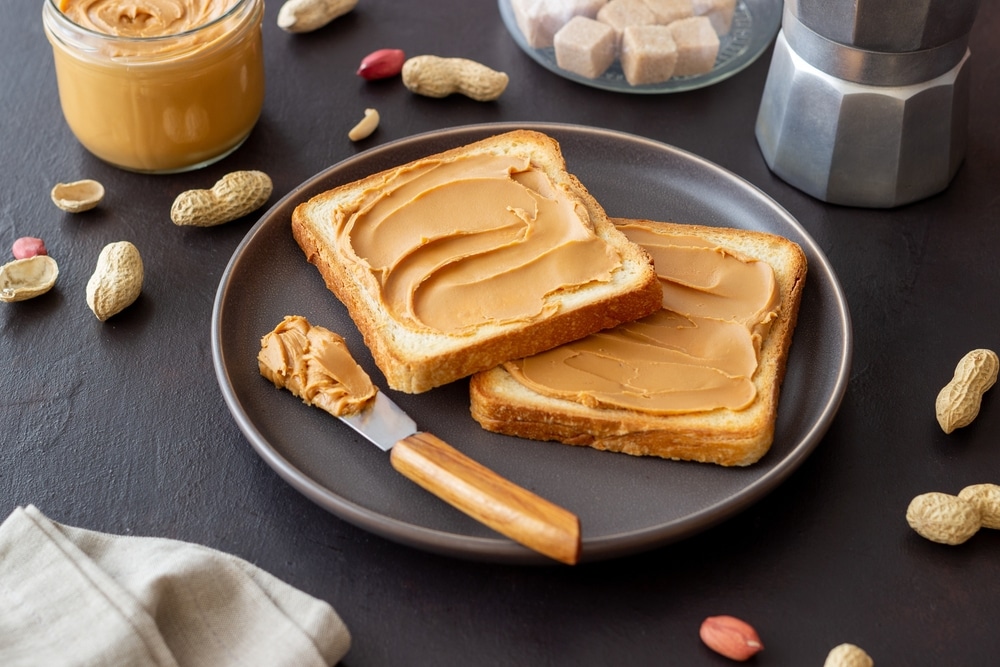
Photo Credit: Shutterstock
No need to refrigerate your store-bought peanut butter — the pantry is just fine!
Peanut butter can last in the pantry 6–24 months unopened, or 2–3 months after it’s opened. Natural peanut butter can last several months unopened, or up to a month once opened.
That said, if you’d rather store it in the fridge, that’s fine, too! If you’re not a fan of the normal oil separation that occurs with natural peanut butter, you can mix it up and store it in the fridge to keep it from separating.
The Final Verdict on Peanut Butter
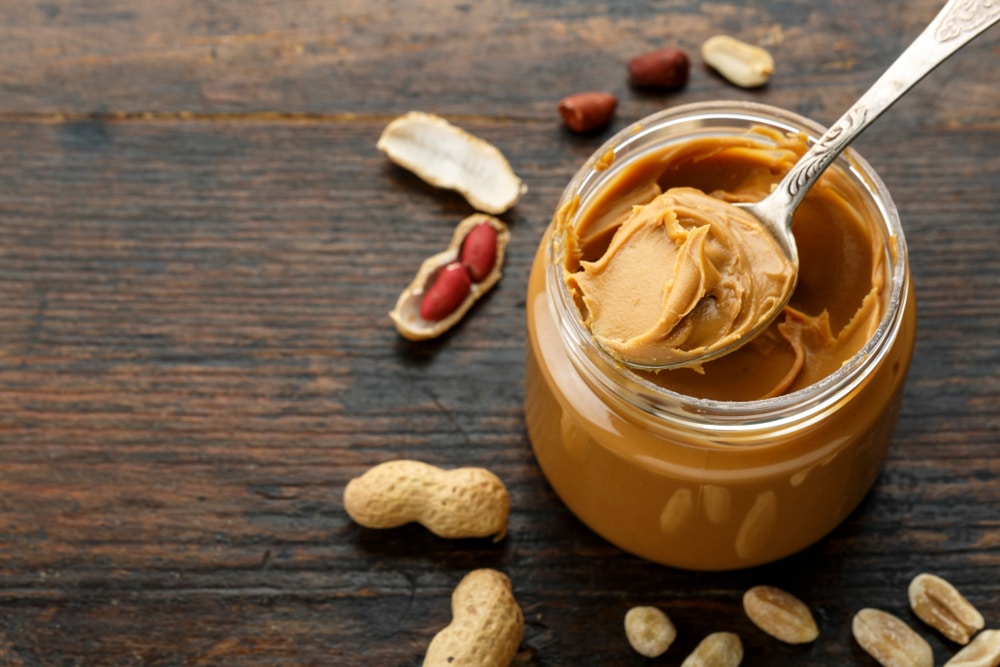
Photo Credit: Shutterstock
Peanut Butter does offer some great nutritional benefits as long as you stick to two rules: don’t overdo it, and stick to natural peanut butter with minimal ingredients. (Peanuts and salt are all you need!)
Of course, the oil that makes its way to the top of natural peanut butter isn’t everyone’s favorite — but remember, it’s a natural separation. Simply mix it up (and store it in the fridge, if you want), and you’re good to go!
Lastly, try limiting your consumption to around two tablespoons per day (one serving size). Moderation is key to enjoying the health benefits of peanut butter without overconsumption of calories or saturated fat.
6 Health Benefits of Celery Juice & Why I Drink It On An Empty Stomach
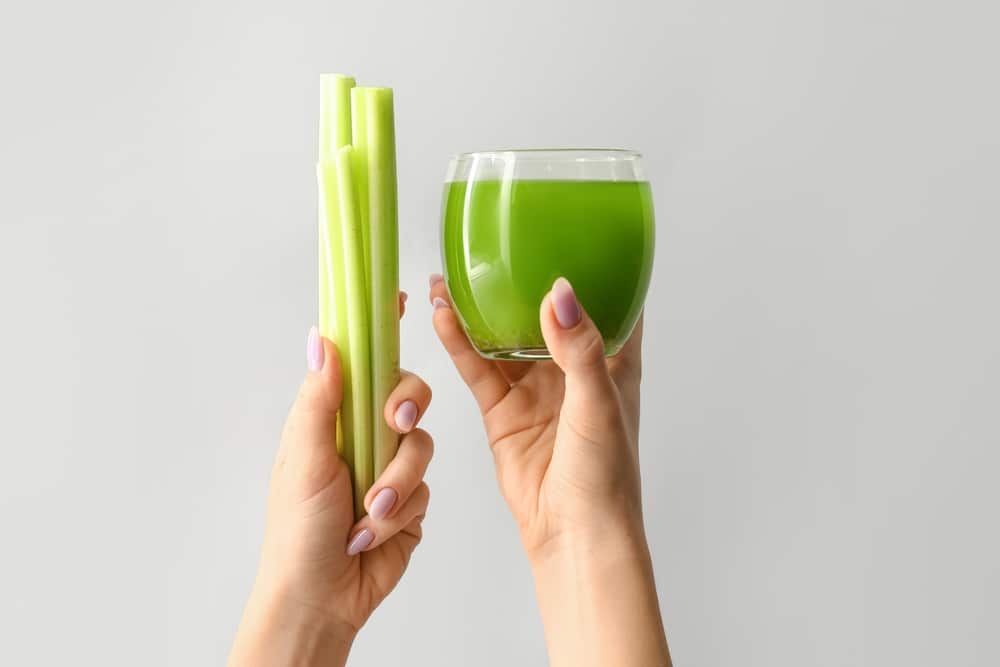
Photo Credit: Shutterstock
Drinking celery juice is worth the hype! There are many health benefits when you drink celery juice daily and on an empty stomach.
From a nutrition standpoint, a whole celery stalk is rich in vitamin K, vitamin A, potassium, iron, and essential amino acids. But it also has many other benefits!
6 Health Benefits of Celery Juice & Why I Drink It On An Empty Stomach
Balance These 4 Hormones for Weight Loss

Photo Credit: Get Healthy U
Your hormones impact so many things—from your mood and energy levels to your weight.
When you are deficient or dominant in any one hormone, it’s easier to gain weight. This is particularly true for women who are experiencing hormonal imbalances caused by the natural aging process.
If you’re someone struggling with weight loss, you might benefit from understanding your hormone levels and trying these natural ways to balance your hormones.
Balance These 4 Hormones for Weight Loss
Sugar Detox: How To Quit Sugar In 6 Steps
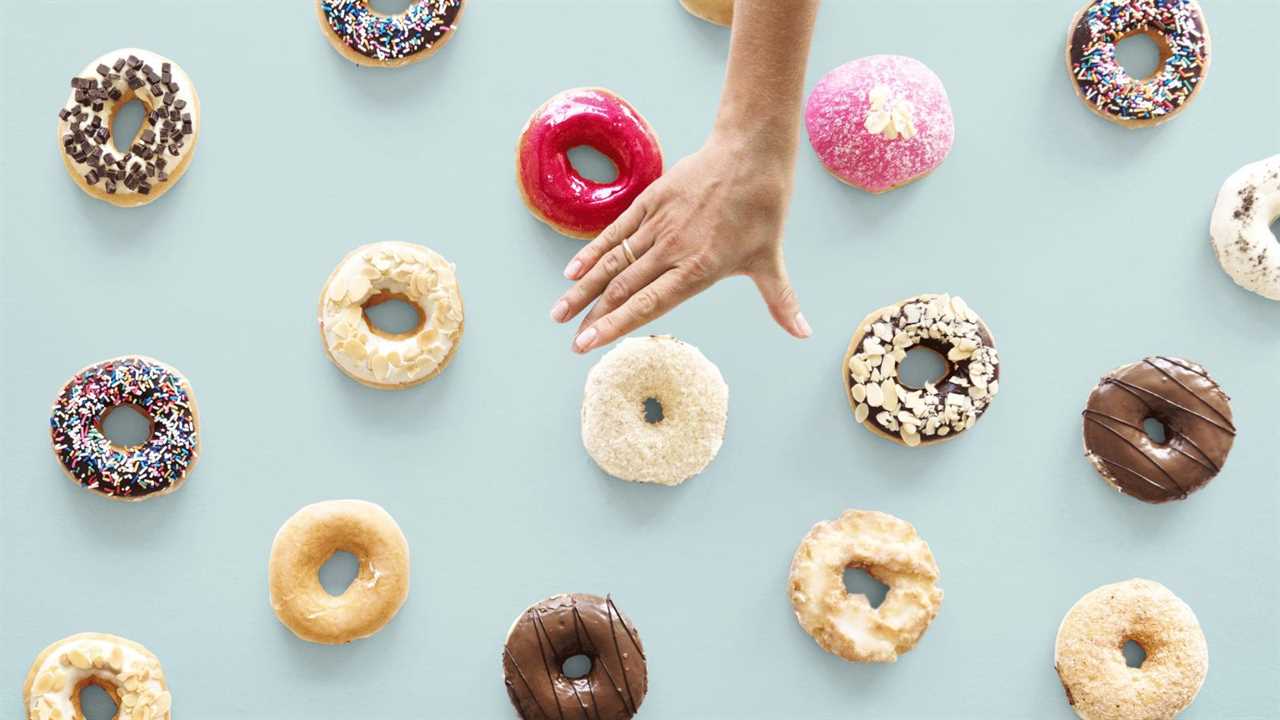
Photo Credit: Shutterstock
It’s hard to find the best way to quit sugar when it’s in so many of our foods! That’s why it’s important to cut back in a smart, sustainable way since doing it cold turkey can be pretty jarring for your body.
Here, we’ll take a look at some of the sugar basics, why you crave it, and how to quit sugar without making yourself totally miserable.
Sugar Detox: How To Quit Sugar In 6 Steps
*** We hold our sponsor in high regard *** |
| [TAG9]
Image Credit: Alicia Mahoney / AuthorsUSA.com |
By: Chris Freytag, CPT
Title: Healthy or Dangerous? The Peanut Butter Facts You Need to See
Sourced From: gethealthyu.com/healthy-or-dangerous-peanut-butter-facts-you-need-see/
Published Date: Fri, 08 Dec 2023 17:20:00 +0000
Did you miss our previous article...
https://naturesmart.us/fitness/designing-your-fitness-journey-how-to-create-a-workout-plan
 HealthWellnessFitnessBeautyVideosPrivacy PolicyTerms And Conditions
HealthWellnessFitnessBeautyVideosPrivacy PolicyTerms And Conditions
